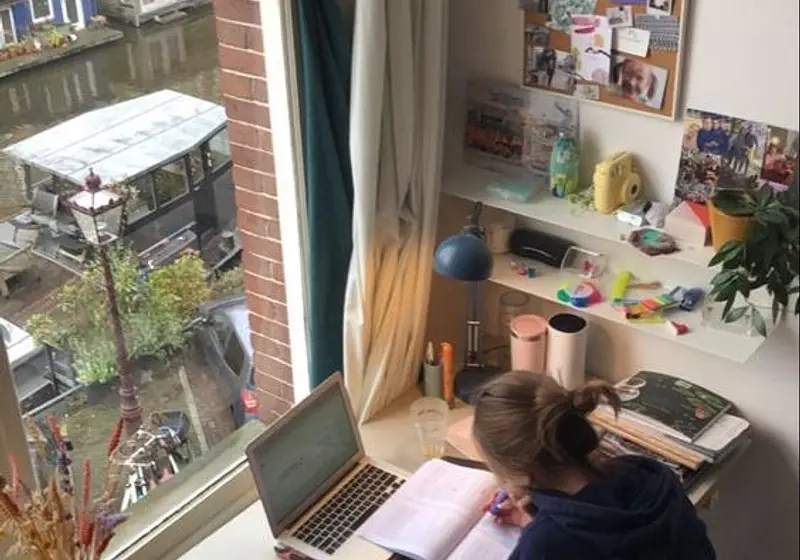Imagine the following scenario: it’s 11 o’clock at night, and you're feverishly finishing up an assignment that's due at 11:59. Your teacher introduced the assignment weeks ago and even provided class time to work on it, yet you’re somehow still struggling to get it done minutes before the deadline. Sound familiar?
If you constantly find yourself procrastinating, keep falling behind due dates, or have a never ending to-do list, then time blocking could be the perfect solution for you.
Let us slide into your dms 🥰
Get notified of top trending articles like this one every week! (we won't spam you)What Is Time Blocking?
Time blocking, like its name suggests, is a time management method that involves splitting your entire day into chunks of time that are designated for specific tasks. It essentially works like a schedule for all parts of your life and includes classes, meetings, rest, and other activities you do throughout the day.
Along with managing already scheduled events, time blocking can also be used to optimize your free time, which many of us are experiencing a lot due to the pandemic. While some of us may thrive with this unstructured free time, others, myself included, tend to feel lost without a clear-cut plan to follow. That’s where time blocking comes in, as it allows for an easy and straightforward way to accomplish tasks.

Take the Quiz: Which Female Character Trope Do You Belong To?
Whether it's in film, TV, or literature, you've likely come across these female character tropes. Take this quiz to discover which one best matches...
Is Time Blocking Effective?
I can personally attest that time blocking is a great way to manage your time, but if you don't believe me, some of the world's busiest people, such as Elon Musk and Bill Gates also swear by it. Cal Newport, the author of Deep Work, even says that, “A 40 hour time-blocked work week, I estimate, produces the same amount of output as a 60+ hour work week pursued without structure.”
The reason why time blocking is so effective is because it promotes deep focus and prevents distractions, which leads to increased productivity. By planning your day into blocks beforehand, you're minimizing the amount of time spent procrastinating since you know exactly what you need to do and when to do it.
Why Time Blocking Is Better Than Other Productivity Strategies
Most of us use planners or to-do lists to organize tasks, but both of these approaches have a major flaw: they don't actually tell you what you need to do right now. Instead, they tell you what you eventually need to get done, which often leads to procrastination and last minute cramming.
This is why time blocking is such a great time management strategy, because unlike to-do lists, which only tell you what you need to accomplish, time blocking also tells you when.
Time blocking allows you to take sole control of your time, which holds you accountable for how you spend it. Because of this, you'll be less likely to make excuses and more likely to work on challenging tasks in order to finish them before the block is up.
How to Start Time Blocking
Now that I've (hopefully) convinced you to set aside your planner and to-do list in favor of time blocking, you might be wondering how exactly you can apply it into your life. To help you with this journey, here is a step-by-step guide on how to start time blocking:
1. Determine Your Most Important Tasks
Before you can start time blocking, you first need to know what tasks you need to accomplish. Focus on your top priorities and activities that you already have planned, such as meetings and classes. Don't worry too much about less important tasks right now, and instead brainstorm 3-5 of your most important ones.
2. Give Each Task A “Block”
Now, it's time to time block! I recommend using a calendar app like Google Calendar, since you can rearrange blocks and add recurring tasks very easily. Fill in your day with events that take place at a specific time and then create blocks for other important activities.
If you don't know how long a task will take, try to overestimate so you don't fall behind schedule. Make sure that you also provide some wiggle room in between tasks in case you need a little extra time.
3. Fill In Your Remaining Time
After you set aside time for crucial tasks, start scheduling smaller ones, such as meals and leisure time. Another important part about time blocking is to leave time for breaks. This prevents yourself from procrastinating in the middle of a challenging task since you know exactly when you can relax. Plus, you'll feel so much more accomplished knowing that you used the entire block productively.
4. Experiment
As you begin to grow more comfortable with time blocking, you'll probably notice that your initial estimates for certain tasks aren't very accurate. If this happens, simply adjust accordingly for the next time you schedule that event. You can also experiment with switching different tasks around to see if your productivity increases.
5. Customize Your System
One of the best things about time blocking is how customizable it is. You can plan repeated tasks, create templates, color code to your heart's desire and so much more with just a few clicks. Have fun with time blocking, and feel free to test out some different features your calendar app offers.
6. Remain Flexible
Although time blocking doesn't seem like it provides a lot of room for flexibility, remember that you can just shorten and adjust your blocks if you're interrupted. Think of time blocking more of a rough guide for your day rather than a definite schedule. This way, you'll have a more structured plan without getting distressed every time an urgent task comes up.
If you find that time blocking doesn't work for you, that's also totally fine. There are plenty of other time management methods you can try, such as the Eisenhower matrix, time tracking, and more. The most important part is that you find what helps you stay focused and productive.










.jpg)

